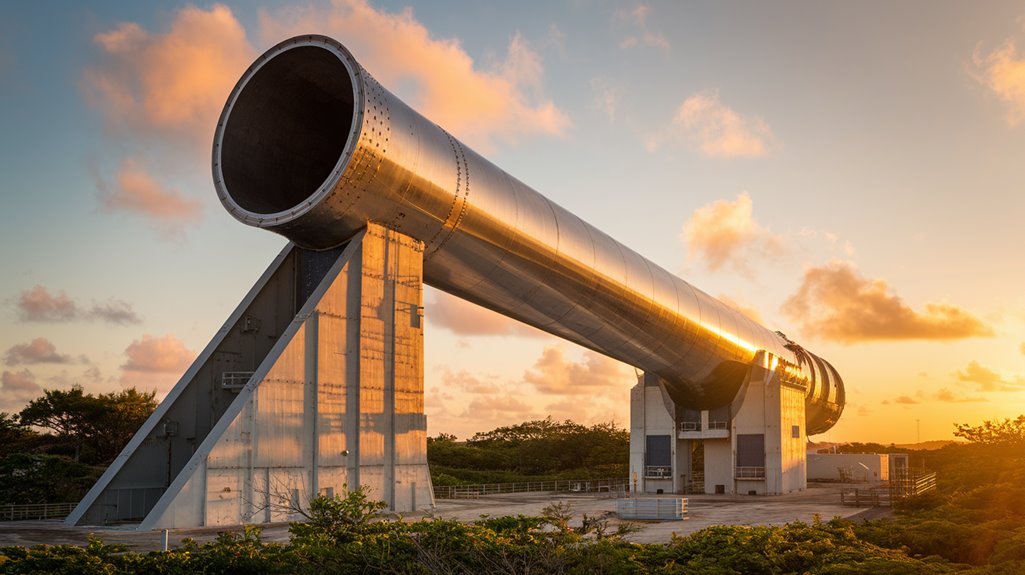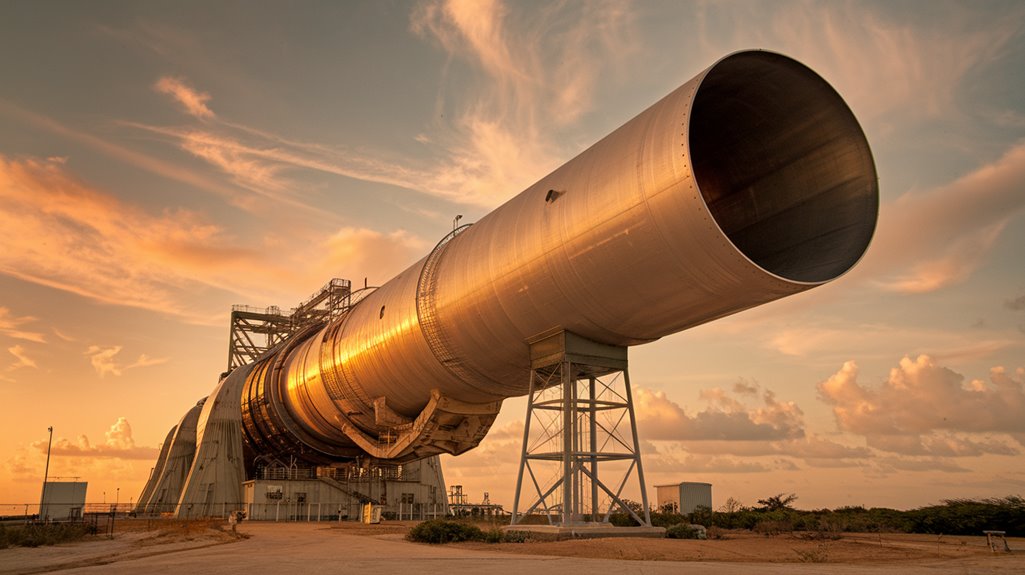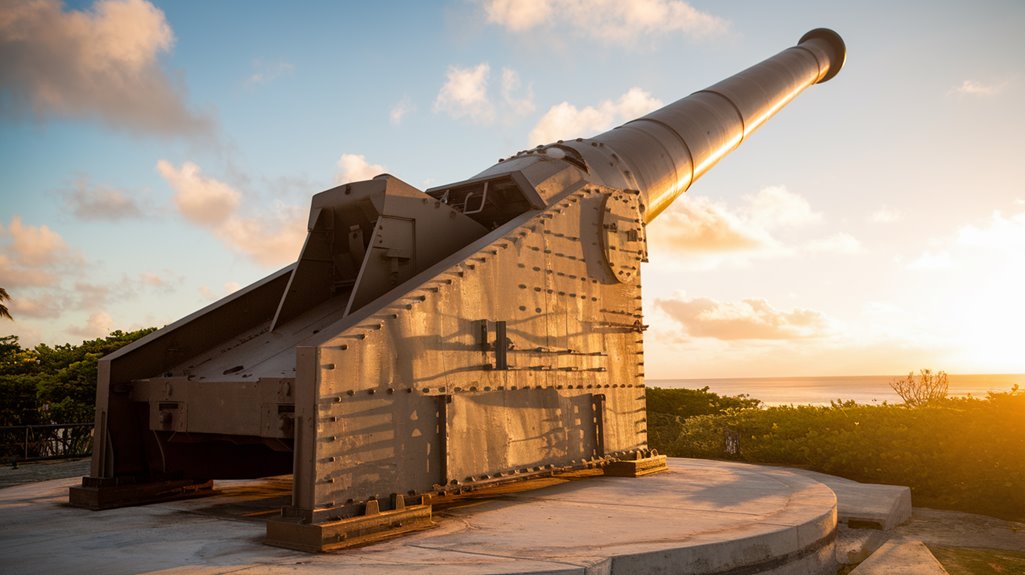A Giant Gun to Launch Satellites? Canada’s Wild Space Project
Like Jules Verne's imaginative cannon that sent explorers to the moon, you're about to discover how Canada's giant gun project isn't just science fiction. You'll find that launching satellites with a massive ground-based cannon isn't as far-fetched as it sounds. While conventional rockets burn through millions in fuel costs and leave orbital debris, this innovative approach could transform space access. There's more to this ambitious project than meets the eye, and what you'll learn next might surprise you.
The Birth of Gun-Launched Satellite Technology

Three key players sparked the revolutionary concept of launching satellites via cannon in 1950s Canada. Dr. Gerald Bull, a brilliant ballistic engineering expert, conceived the groundbreaking idea while working at CARDE. McGill University's Space Research Institute provided the academic foundation, while the U.S. Army delivered vital financial backing and equipment.
You might wonder how this satellite propulsion concept moved from theory to reality. It started with Bull's small-scale experiments using 76mm guns, but the project gained serious momentum when the U.S. Army's Ballistic Research Laboratory got involved. The facility at Barbados was strategically chosen for its location as a research station near equator. The program successfully launched over 200 atmospheric probes between 1962 and 1967.
They contributed essential resources, including 16-inch naval gun barrels and radar tracking systems. In March 1962, Bull and Donald Mordell officially disclosed their ambitious HARP project, marking Canada's bold entry into the space race through unconventional means.
Technical Challenges and Engineering Breakthroughs
While the concept of gun-launched satellites seemed promising, engineers faced intimidating technical hurdles that would test the limits of 1960s technology.
The most formidable challenge was developing components that could withstand extreme g forces during launch – far more intense than conventional rockets. You'd need incredibly robust materials and innovative packaging solutions to protect sensitive equipment. Projectiles faced up to 20,000g forces, making most conventional satellite designs completely unsuitable. Taking inspiration from Project HARP, scientists conducted numerous suborbital test flights to evaluate component durability.
Thermal shielding posed another major obstacle. As the projectile would blast through the atmosphere at hypersonic speeds, it would encounter severe heating that could destroy unprotected components.
Engineers had to develop advanced heat-resistant materials while ensuring the satellite remained aerodynamically stable during its rapid ascent. The project demanded breakthroughs in everything from electronic hardening to high-speed valve technology, pushing the boundaries of what was possible with existing materials and engineering knowledge.
Canada's Bold Vision for Space Innovation
As Canada positions itself at the forefront of space innovation, the nation has embraced an ambitious vision that extends far beyond traditional aerospace ventures.
Through targeted investments in space exploration and technological advancements, Canada's commitment to innovation is reshaping its future.
You'll find Canada's strategic approach focuses on creating a sustainable space sector that drives both scientific discovery and economic growth. This commitment aligns with the government's dedication to whole-of-government effort initiatives. The industry generates $5.7 billion in annual revenues while employing thousands of skilled workers.
You're seeing this transformation through enhanced satellite Earth observation capabilities, modernized regulations, and innovative funding programs that support emerging space firms.
The government's emphasis on developing the next generation of space professionals means you'll witness increased collaboration between industry, academia, and research institutions.
Canada's strategy guarantees you'll benefit from space-derived solutions to everyday challenges while maintaining the country's competitive edge in the global space sector.
Environmental Impact and Community Response
Canada's bold space vision brings significant environmental challenges that warrant careful examination. You'll find that environmental safety concerns primarily revolve around the use of hydrazine, a toxic rocket propellant that poses risks to local ecosystems and human health. The government's commitment of $1.012 billion towards satellite development demonstrates the scale of environmental considerations at stake.
Key areas requiring immediate attention include:
- Potential launch failures causing debris scatter and soil contamination within a 500-meter radius
- Transportation and handling risks of hazardous materials
- Air emissions requiring detailed evacuation plans
Community engagement has highlighted significant regulatory gaps in Canada's space exploration framework.
You'll notice that both provincial and federal authorities lack sufficient technical expertise to evaluate these environmental impacts fully. The project's approval depends on strict compliance with conditions aimed at protecting biodiversity and ensuring safe operations, while local communities continue voicing concerns about long-term environmental effects. Maritime Launch Services must pay up to $100,000 annually for compliance monitoring and environmental oversight.
Economic Implications for the Space Industry

Based on extensive economic projections, the Wild Space Project promises substantial financial benefits for Canada's space industry and broader economy.
You'll see immediate impacts during the three-year construction phase, with $171 million added to Canada's GDP and 748 new jobs in Nova Scotia alone. Provincial businesses will benefit significantly, as 34 percent of total construction spending will flow directly to Nova Scotia enterprises.
Once operational, you can expect even more impressive numbers. The project will generate $501 million in annual expenditures and create nearly 1,000 full-year jobs across Canada. Companies will be able to join the 12,624 space-related jobs already thriving in the Canadian space sector.
With a GDP multiplier of 1.93, the economic growth extends far beyond direct spending. You'll notice increased government revenues exceeding $100 million annually, while the project drives job creation in both the space sector and supporting industries.
The spaceport's domestic launch capacity will reduce costs for Canadian companies and position the nation as a leading space industry hub.










